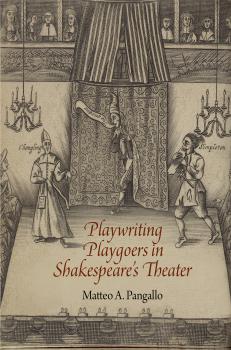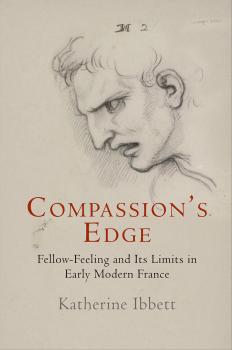MREADZ.COM - много разных книг на любой вкус
Скачивание или чтение онлайн электронных книг.Liquid Capital
In the nineteenth century, politicians transformed a disease-infested bog on the southwestern shore of Lake Michigan into an intensively managed waterscape supporting the life and economy of Chicago, now America's third-most populous city. In Liquid Capital , Joshua A. T. Salzmann shows how, through a combination of entrepreneurship, civic spirit, and bareknuckle politics, the Chicago waterfront became a hub of economic and cultural activity while also the site of many of the nation's precendent-setting decisions about public land use and environmental protection. Through the political saga of waterfront development, Salzmann illuminates Chicago's seemingly paradoxical position as both a paragon of buccaneering capitalism and assertive state power. The list of actions undertaken by local politicians and boosters to facilitate the waterfront's success is long: officials reversed a river, built a canal to fuse the Great Lakes and Mississippi River watersheds, decorated the lakeshore with parks and monuments, and enacted regulations governing the use of air, land, and water. With these feats of engineering and statecraft, they created a waterscape conducive to commodity exchange, leisure tourism, and class harmony—in sum, an invaluable resource for profit making. Their actions made the city's growth and the development of its western hinterlands possible. Liquid Capital sheds light on these precedent-making policies, their effect on Chicago's development as a major economic and cultural force, and the ways in which they continue to shape legislation regarding the use of air and water.
Be a Perfect Man
The life of an aristocratic Carolingian man involved an array of behaviors and duties associated with his gender and rank: an education in arms and letters; training in horsemanship, soldiery, and hunting; betrothal, marriage, and the virile production of heirs; and the masterful command of a prominent household. In Be a Perfect Man , Andrew J. Romig argues that Carolingian masculinity was constituted just as centrally by the performance of caritas , defined by the early medieval scholar Alcuin of York as a complete and all-inclusive love for God and for fellow human beings, flowing from the whole heart, mind, and soul. The authority of the Carolingian man depended not only on his skills in warfare and landholding but also on his performances of empathy, devotion, and asceticism. Romig maps caritas as a concept rooted in a vast body of inherited Judeo-Christian and pagan philosophies, shifting in meaning and association from the patristic era to the central Middle Ages. Carolingian discussions and representations of caritas served as a discourse of power, a means by which early medieval writers made claims, both explicit and implicit, about the hierarchies of power that they believed ought to exist within their world. During the late eighth, ninth, and early tenth centuries, they creatively invoked caritas to link aristocratic men with divine authority. Romig gathers conduct handbooks, theological tracts, poetry, classical philosophy, church legislation, and exegetical texts to outline an associative process of gender ideology in the Carolingian Middle Ages, one that framed masculinity, asceticism, and authority as intimately interdependent. The association of power and empathy remains with us to this day, Romig argues, as a justification for existing hierarchies of authority, privilege, and prestige.
Fragile Families
In the past decade, debates over immigrant rights and family rights, and accompanying concerns over birthright citizenship, have taken center stage in popular media and mainstream political debates. These debates, however, frequently overlook the role of the public child welfare system in the United States—the agency charged with protecting children and maintaining the integrity of families. Based on research conducted in the San Diego-Tijuana region between 2008 and 2012, Fragile Families tells the stories of children, parents, social workers, and legal actors enmeshed in the child welfare system, and sheds light on the particular challenges faced by the children of detained and deported non-U.S. citizen parents who are simultaneously caught up in the immigration system in this border region. Many families come into contact with child welfare services because of the precariousness of their lives—unsafe housing, unstable employment, and the conditions of violence, drug use, and domestic violence made visible by the heightened police presence in impoverished communities. Naomi Glenn-Levin Rodriguez examines the character of child welfare decision-making processes and how discretionary decisions constitute the central avenue through which race, citizenship, and other cultural processes inflect child welfare practice in a manner that disproportionately impacts Latina/o families—both undocumented and U.S. citizens. Drawing on ethnographic fieldwork to look at how immigration enforcement and child welfare play central roles in the ongoing production of citizenship, race, and national belonging, Fragile Families focuses on the everyday experiences of Latina/o families whose lives are shaped at the nexus of child welfare services and immigration enforcement.
Playwriting Playgoers in Shakespeare's Theater
Among the dramatists who wrote for the professional playhouses of early modern London was a small group of writers who were neither members of the commercial theater industry writing to make a living nor aristocratic amateurs dipping their toes in theatrical waters for social or political prestige. Instead, they were largely working- and middle-class amateurs who had learned most of what they knew about drama from being members of the audience. Using a range of familiar and lesser-known print and manuscript plays, as well as literary accounts and documentary evidence, Playwriting Playgoers in Shakespeare's Theater shows how these playgoers wrote and revised to address what they assumed to be the needs of actors, readers, and the Master of the Revels; how they understood playhouse materials and practices; and how they crafted poetry for theatrical effects. The book also situates them in the context of the period's concepts of, and attitudes toward, playgoers' participation in the activity of playmaking. Plays by playgoers such as the rogue East India Company clerk Walter Mountfort or the highwayman John Clavell invite us into the creative imaginations of spectators, revealing what certain audience members wanted to see and how they thought actors might stage it. By reading Shakespeare's theater through these playgoers' works, Matteo Pangallo contributes a new category of evidence to our understanding of the relationships between the early modern stage, its plays, and its audiences. More broadly, he shows how the rise of England's first commercialized culture industry also gave rise to the first generation of participatory consumers and their attempts to engage with mainstream culture by writing early modern «fan fiction.»
Liquid Landscape
In Florida, land and water frequently change places with little warning, dissolving homes and communities along with the very concepts of boundaries themselves. While Florida's landscape of saturated swamps, shifting shorelines, coral reefs, and tiny keys initially impeded familiar strategies of early U.S. settlement, such as the establishment of fixed dwellings, sturdy fences, and cultivated fields, over the course of the eighteenth and nineteenth centuries, Americans learned to inhabit Florida's liquid landscape in unconventional but no less transformative ways. In Liquid Landscape , Michele Currie Navakas analyzes the history of Florida's incorporation alongside the development of new ideas of personhood, possession, and political identity within American letters. From early American novels, travel accounts, and geography textbooks, to settlers' guides, maps, natural histories, and land surveys, early American culture turned repeatedly to Florida's shifting lands and waters, as well as to its itinerant enclaves of Native Americans, Spaniards, pirates, and runaway slaves. This preoccupation with Floridian terrain and populations, argues Navakas, reveals a deep American concern with the challenges of settling a region so exceptional in topography, geography, and demography. Navakas reads a vast archive of popular, literary, and reference texts spanning Revolution to Reconstruction, including works by William Bartram, James Fenimore Cooper, and Harriet Beecher Stowe, to uncover an alternative history of American possession, one that did not descend exclusively, or even primarily, from the more familiar legal, political, and philosophical conceptions of American land as enduring, solid, and divisible. The shifting southern edge of early America produced a new language of settlement, belonging, territory, and sovereignty, and that language would ultimately transform how people all across the rapidly changing continent imagined the making of U.S. nation and empire.
Slavery and Silence
In the thirty-five years before the Civil War, it became increasingly difficult for Americans outside the world of politics to have frank and open discussions about the institution of slavery, as divisive sectionalism and heated ideological rhetoric circumscribed public debate. To talk about slavery was to explore—or deny—its obvious shortcomings, its inhumanity, its contradictions. To celebrate it required explaining away the nation's proclaimed belief in equality and its public promise of rights for all, while to condemn it was to insult people who might be related by ties of blood, friendship, or business, and perhaps even to threaten the very economy and political stability of the nation. For this reason, Paul D. Naish argues, Americans displaced their most provocative criticisms and darkest fears about the institution onto Latin America. Naish bolsters this seemingly counterintuitive argument with a compelling focus on realms of public expression that have drawn sparse attention in previous scholarship on this era. In novels, diaries, correspondence, and scientific writings, he contends, the heat and bluster of the political arena was muted, and discussions of slavery staged in these venues often turned their attention south of the Rio Grande. At once familiar and foreign, Cuba, Brazil, Haiti, and the independent republics of Spanish America provided rhetorical landscapes about which everyday citizens could speak, through both outright comparisons or implicit metaphors, what might otherwise be unsayable when talking about slavery at home. At a time of ominous sectional fracture, Americans of many persuasions—Northerners and Southerners, Whigs and Democrats, scholars secure in their libraries and settlers vulnerable on the Mexican frontier—found unity in their disparagement of Latin America. This displacement of anxiety helped create a superficial feeling of nationalism as the country careened toward disunity of the most violent, politically charged, and consequential sort.
Miscellaneous Investigations in Central Tikal--Great Temples III, IV, V, and VI
The Maya center of Tikal, in Guatemala, is famous for its well-preserved architecture. This book presents detailed descriptions of four of the six Great Temples that dominate Tikal's city center. Whereas Great Temples I and II were published in 1990 in Tikal Report 14, the four structures presented here are Great Temples III, IV, V, and VI. All but Great Temple V represent Late Classic construction and can be associated with known rulers. It is tempting to think of these structures as funerary monuments, but this is only a supposition. Their relationship with rulers may have been much more complex. This report is the primary record of these important buildings in Tikal's urban landscape. It provides clear, precise, and usable architectural analyses for Mayanists, archaeologists, art historians, architectural historians, urbanists, and those interested in construction techniques and in the uses of Maya buildings. University Museum Monograph, 146
The Labor of the Mind
How did educated and cultivated men in early modern France and Britain perceive and value their own and women's cognitive capacities, and how did women in their circles challenge those perceptions, if only by revaluing the kinds of intelligence attributed to them? What was thought to distinguish the «manly mind» from the feminine mind? How did awareness of these questions inform various kinds of published and unpublished texts, including the philosophical treatise, the dialogue, the polite essay, and the essay in literary criticism? The Labor of the Mind plumbs the social and cultural logic of the Enlightenment's trope of the manly mind; offers new readings of the textual representations of it; and examines the ways in which the trope was subverted or at least subtly questioned. With close readings of the writings of well-known and less familiar men and women, including Poullain de la Barre, The Third Earl of Shaftesbury, Madeleine de Scudéry, David Hume, Antoine-Léonard Thomas, Suzanne Curchod Necker, Denis Diderot, and Louise d'Epinay, and tracing their social networks and friendships, Anthony J. La Vopa explores the problematic opposition between mental labor as concentrated and sustained work, a labor of abstraction and judgment for which only men had the strength, and an aesthetic of effortless and tasteful play in polite conversation in which women were thought to excel. Covering nearly a century and a half of cultural and intellectual life from France to England and Scotland and then back again, La Vopa locates, beneath the tenacity of assumed natural differences, a lexicon imbued with ambivalence, ambiguity, and argument. The Labor of the Mind reveals the legacy for modernity of a fraught gendering of intellectual labor.
Ruling the Spirit
Histories of the German Dominican order have long presented a grand narrative of its origin, fall, and renewal: a Golden Age at the order's founding in the thirteenth century, a decline of Dominican learning and spirituality in the fourteenth, and a vibrant renewal of monastic devotion by Dominican «Observants» in the fifteenth. Dominican nuns are presumed to have moved through a parallel arc, losing their high level of literacy in Latin over the course of the fourteenth century. However, unlike the male Dominican friars, the nuns are thought never to have regained their Latinity, instead channeling their spiritual renewal into mystical experiences and vernacular devotional literature. In Ruling the Spirit , Claire Taylor Jones revises this conventional narrative by arguing for a continuous history of the nuns' liturgical piety. Dominican women did not lose their piety and literacy in the fifteenth century, as is commonly believed, but instead were urged to reframe their devotion around the observance of the Divine Office. Jones grounds her research in the fifteenth-century liturgical library of St. Katherine's in Nuremberg, which was reformed to Observance in 1428 and grew to be one of the most significant convents in Germany, not least for its library. Many of the manuscripts owned by the convent are didactic texts, written by friars for Dominican sisters from the fourteenth through the fifteenth century. With remarkable continuity across genres and centuries, this literature urges the Dominican nuns to resume enclosure in their convents and the strict observance of the Divine Office, and posits ecstatic experience as an incentive for such devotion. Jones thus rereads the «sisterbooks,» vernacular narratives of Dominican women, long interpreted as evidence of mystical hysteria, as encouragement for nuns to maintain obedience to liturgical practice. She concludes that Observant friars viewed the Divine Office as the means by which Observant women would define their communities, reform the terms of Observant devotion, and carry the order into the future.
Compassion's Edge
Compassion's Edge examines the language of fellow-feeling—pity, compassion, and charitable care—that flourished in France in the period from the Edict of Nantes in 1598, which established some degree of religious toleration, to the official breakdown of that toleration with the Revocation of the Edict in 1685. This is not, however, a story about compassion overcoming difference but one of compassion reinforcing division: the seventeenth-century texts of fellow-feeling led not to communal concerns but to paralysis, misreading, and isolation. Early modern fellow-feeling drew distinctions, policed its borders, and far from reaching out to others, kept the other at arm's length. It became a central feature in the debates about the place of religious minorities after the Wars of Religion, and according to Katherine Ibbett, continues to shape the way we think about difference today. Compassion's Edge ranges widely over genres, contexts, and geographies. Ibbett reads epic poetry, novels, moral treatises, dramatic theory, and theological disputes. She takes up major figures such as D'Aubigné, Montaigne, Lafayette, Corneille, and Racine, as well as less familiar Jesuit theologians, Huguenot ministers, and nuns from a Montreal hospital. Although firmly rooted in early modern studies, she reflects on the ways in which the language of compassion figures in contemporary conversations about national and religious communities. Investigating the affective undertow of religious toleration, Compassion's Edge provides a robust corrective to today's hope that fellow-feeling draws us inexorably and usefully together.









